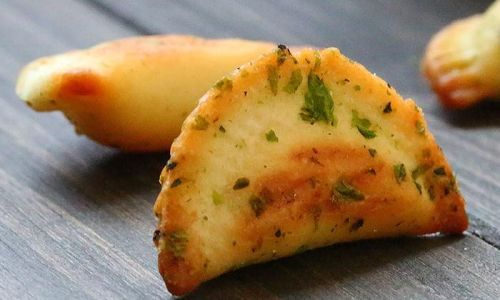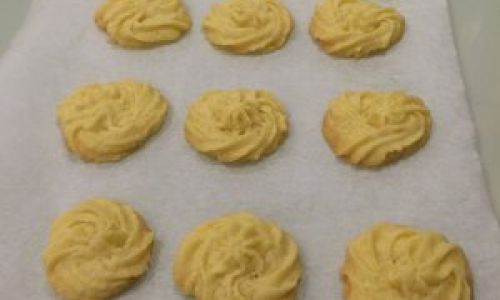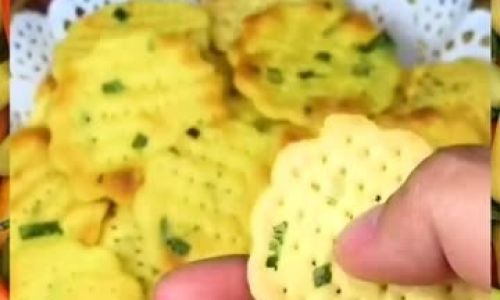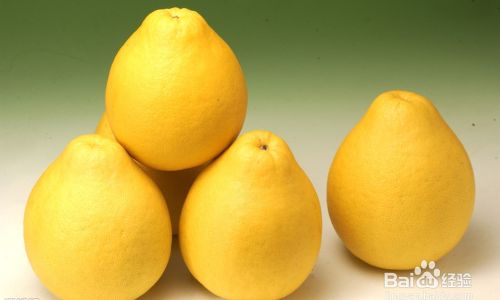Introduction
Baking cookies is a timeless pastime enjoyed by people across the globe. Whether you’re a seasoned baker or a novice in the kitchen, there’s something inherently satisfying about creating homemade cookies that warm the heart and tantalize the taste buds. From classic chocolate chip to innovative flavors like lavender shortbread, the possibilities are endless. However, achieving that perfect batch of cookies isn’t just about following a recipe; it’s about understanding the science behind baking and honing your skills to bring out the best in every ingredient. In this comprehensive guide, we’ll delve into the intricacies of how to make delicious cookies, covering everything from selecting the right ingredients to troubleshooting common baking pitfalls.
Chapter 1: The Foundations of Cookie Baking

1 Understanding Ingredients
The quality of your ingredients is paramount to the success of your cookies. Here’s a breakdown of the essentials:
-
Flour: All-purpose flour is a versatile choice for most cookies, but you might also experiment with cake flour for softer cookies or bread flour for chewier textures. Always measure flour correctly—spoon it into the measuring cup and level it off with a knife to avoid using too much.
-
Sugar: Granulated sugar provides sweetness and structure, while brown sugar adds moisture and a caramelized flavor. A combination of both often yields the best results.
-
Butter and Fat: Unsalted butter is preferred because it allows you to control the amount of salt. Butter adds flavor and tenderness. For vegan or dairy-free options, coconut oil or margarine can be substituted.
-
Eggs: Eggs act as binders and contribute to the structure and moisture of cookies. Room-temperature eggs mix more evenly into the batter.
-
Leavening Agents: Baking soda and baking powder are crucial for lift. Baking soda reacts with acidic ingredients like buttermilk or vinegar, while baking powder works independently. Make sure they’re fresh; old leavening agents can lead to flat cookies.
-
Salt: A pinch of salt enhances the overall flavor of your cookies, making the sweet elements shine.

-
Vanilla Extract: Pure vanilla extract adds depth and complexity to your cookies. Avoid artificial substitutes for the best results.
2 Equipment Matters
Having the right tools can make a world of difference:
- Mixing Bowls: Use stainless steel or glass bowls for even heat distribution.
- Stand Mixer or Hand Mixer: These make mixing dough quick and efficient.
- Measuring Cups and Spoons: Accuracy is key; use dry measuring cups for dry ingredients and liquid measuring cups for liquids.
- Cookie Sheets: Light-colored, aluminum, or non-stick cookie sheets distribute heat evenly. Dark sheets can cause overbaking.
- Parchment Paper or Silicone Baking Mats: These prevent sticking and make cleanup a breeze.
- Cooling Racks: Essential for letting cookies cool properly after baking.
Chapter 2: Techniques for Perfect Cookies
1 Creaming the Butter and Sugar
Creaming butter and sugar together is a critical step. It incorporates air into the dough, creating a lighter, fluffier texture. Beat the butter until it’s creamy, then gradually add the sugar, beating until the mixture is light and fluffy. This can take several minutes, so be patient.
2 Temperature Control
- Room Temperature Ingredients: Butter, eggs, and other dairy products should be at room temperature to blend smoothly and evenly.
- Oven Temperature: Preheat your oven to the correct temperature and use an oven thermometer to ensure accuracy. Oven temperatures can vary, so this step is crucial.
3 Mixing and Handling Dough

- Mixing Method: Follow the recipe’s instructions for mixing order and speed. Over-mixing can develop too much gluten, leading to tough cookies.
- Chilling Dough: For some recipes, chilling the dough before baking can improve texture and flavor. It also allows the flavors to meld together.
4 Shaping and Scooping
- Uniform Size: Use a cookie scoop or spoon to ensure all your cookies are the same size. This helps them bake evenly.
- Spacing: Leave enough space between cookies on the baking sheet to allow for expansion.
Chapter 3: Baking and Cooling
1 Baking Time and Temperature
- Baking Time: Start with the time suggested in the recipe, but keep a close eye on your cookies. Oven temperatures can vary, so they may need more or less time.
- Golden Brown: Cookies should be a light golden brown around the edges and slightly paler in the center. They will continue to firm up as they cool.
2 Avoiding Common Pitfalls
- Overbaking: Cookies should still be slightly soft in the center when removed from the oven. They will firm up as they cool.
- Underbaking: Cookies that are too soft will collapse and lose their shape. Use the “two-minute rule” if unsure: remove cookies from the oven two minutes before they look done and let them finish baking on the hot cookie sheet.
3 Cooling
- Cooling on the Sheet: Allow cookies to cool on the baking sheet for a few minutes before transferring them to a cooling rack. This helps them set.
- Complete Cooling: Cookies should be completely cool before storing or frosting to avoid sticking or melting frosting.
Chapter 4: Innovating and Experimenting
1 Adding Mix-Ins
- Chocolate Chips and Chunks: Use a variety of chocolate for depth, like dark, milk, and white chocolate.
- Nuts and Seeds: Chopped nuts, seeds, and dried fruits add texture and nutrition. Toast nuts before adding for extra flavor.
- Extracts and Spices: Experiment with different extracts like almond, lemon, or orange, and spices like cinnamon, nutmeg, or cardamom.
2 Creating Unique Flavors

- Savory Cookies: Think cheese, rosemary, and olive oil for a delightful savory twist.
- Gluten-Free and Vegan Options: Use gluten-free flour blends and vegan butter or oil to cater to dietary restrictions.
- Infused Butters: Infuse butter with flavors like vanilla beans, lavender, or citrus zest for a unique twist.
3 Decorating and Frosting
- Simple Icing: A basic powdered sugar and milk icing is versatile and easy to color.
- Royal Icing: For more intricate designs, royal icing sets hard and is perfect for detailed decorations.
- Sprinkles and Edible Glitter: Add a festive touch with colorful sprinkles or edible glitter.
Chapter 5: Troubleshooting and Tips
1 Common Issues and Solutions
- Flat Cookies: This can be caused by over-mixing, using too much baking soda, or not chilling the dough. Adjust your technique accordingly.
- Dry Cookies: Lack of moisture can be due to overbaking or using too much flour. Check your oven temperature and measure ingredients carefully.
- Greasy Cookies: This often happens when butter is too warm or the cookies are overbaked. Ensure butter is at room temperature and bake until just golden.
2 Storage Tips
- Airtight Containers: Store cookies in airtight containers to keep them fresh. Layer cookies with parchment paper to prevent sticking.
- Freezing: Cookies can be frozen for up to three months. Wrap them tightly in plastic wrap or place in freezer bags. To thaw, let them sit at room temperature or warm slightly in the oven.
Conclusion
Making delicious cookies is a blend of science and art, requiring precision in measurement and creativity in flavor combinations. By understanding the role of each ingredient, mastering essential techniques, and experimenting with new flavors and decorations, you can elevate your cookie baking to a new level. Whether you’re baking for a family gathering, a holiday celebration, or just a personal treat, the joy of creating homemade cookies is in the process and the end result. Happy baking!
This guide covers the essentials and beyond, aiming to equip you with the knowledge and skills necessary to bake cookies that are not only delicious but also visually appealing and bursting with flavor. Remember, baking is a journey, and with each batch, you’ll learn something new. Enjoy the process and savor the sweet rewards!




0 comments